Introduction and Overview
We had read and heard a lot about the new JVC NX7 since we first saw when it was introduced at CEDIA 2018. But, as we had learned many times before, it is very difficult to really know how good its performance really is until we could get our hand on one in our own facility and put it through its paces. It did not disappoint: the blacks are very deep, it has very good wide color gamut, and its resolution is native 4K (as in 4096 X 2160). The Epson Pro Cinema 6050UB is the latest HDR projector from Epson and their improved HDR Pro was something we were anxious to explore. The Theo-Z65 is our own modification that we developed as a result of our experience with laser projectors and desire to see more of that rich color that only a cinema filter (or pure RGB light source) can provide and, when coupled with the rich color of the laser phosphor engine, has proven to delight many a home theater enthusiast. But, how would these three very different projectors compare: LCOS, LCD, DLP, and lamp and laser? That is what prompted this triple comparison.
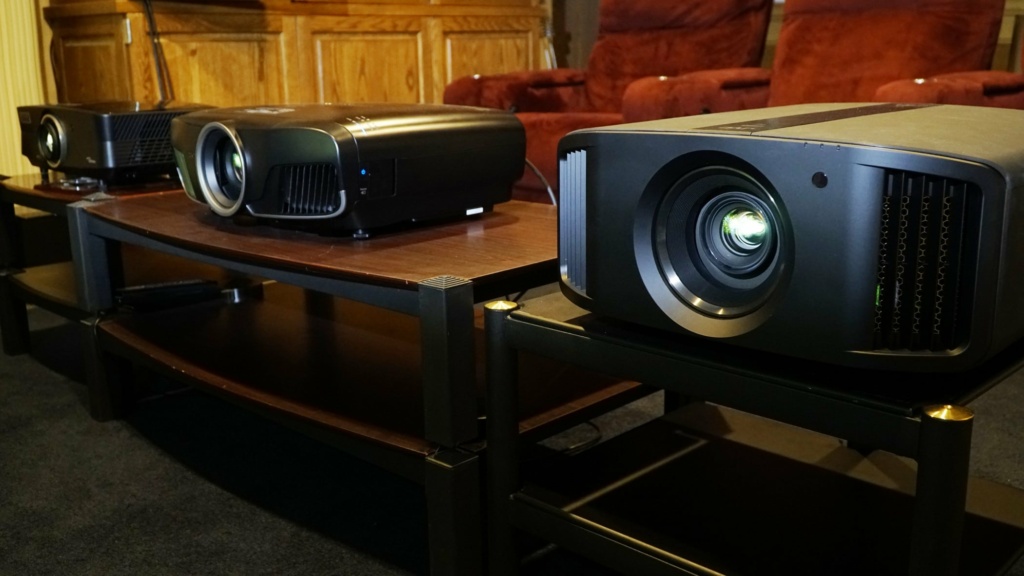
From left to right, TVS Pro Theo-Z65 (modified Optoma UHZ65) , Epson Pro Cinema 6050UB, JVC DLA-NX7.
What we discovered was something of a surprise, actually three major surprises:
- The brightness in all three at calibrated HDR
- The contrast comparisons
- The detail and resolution comparisons
In fact, when we discussed these findings, we were convinced that most people would not believe us either, so we decided to offer the “TVS Projector Challenge.” This also addresses the challenge of people not being able to see the projectors they are interested in before they buy and allow them to find the best projector for their home theater. If we had not seen these similarities and differences in person ourselves, I doubt whether we would have believed it. Some, who have watched the video, have even thought that we were trying to declare a winner – which is not the case. Each projector has its strengths and weaknesses and a prospective buyer must consider what makes the most sense for his/her situation and theater environment. For example, if someone wanted to do a very large screen of say 150″, and still have good HDR, the Epson in the “HDR” color mode may make the most sense. On the other hand, if someone has a very dark theater environment, and wants the very best blacks, then the JVC would be the clear winner. Others may want the convenience of a solid state laser projector with its lack of maintenance (filter cleaning) and no extra cost of lamps when they grow dim. So for those, the Theo-Z65 might be a good choice. We are simply trying to help prospective customers have the information they need, and understand the key differences so they can make the best choice for their application.
The Projectors
These projectors were chosen because they all featured wide color gamuts (70-80% BT2020), 4K 18bps input capability, and were all below $8,000 dollars. They also represented the three key projector technologies: LCOS, LCD, and DLP. They also represent a significant improvement in HDR brightness and have, or declare to have, very good black levels and contrast (and they do!).
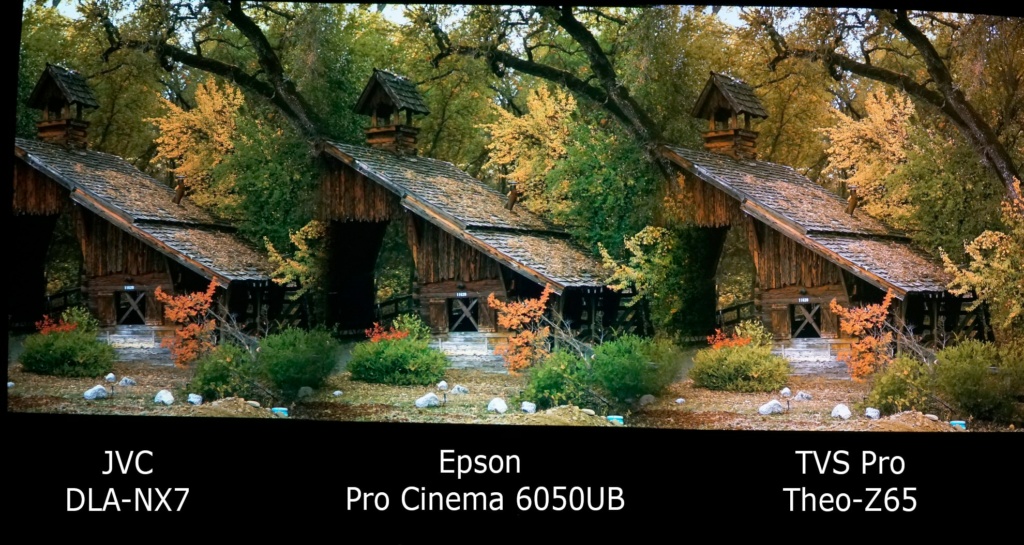
All three projectors are capable of very good color and contrast, as seen in this HDR image from the HDR10 calibration disc from Diversified Video Solutions.
The Specs
| JVC DLA-NX7 | Epson Pro Cinema 6050UB | TVS Pro Theo-Z65 | |
| Image Type: | .69″ LCOS D-ILA x 3 | 3 LCD | .66″ DMD DLP |
| Resolution: | True 4K (4096 x 2160) | 4K UHD (3840 x 2160) | True 4K UHD (3840×2160) |
| Lumen Brightness: | 1900 | 2600 | 2400 |
| Dimensions: | 19.75″ x 9.25″ x 19.5″ | 20.5″ x 17.7″ x 7.6″ | 19.6″ x 13.25″ x 6″ |
| Weight: | 44 lbs. | 24.7 lbs | 20.5 lbs. |
| Typical Price: | $7,999 | $3,999 | $5,298 |
What we wanted to do is discover how they compared to each other, not that one is really better than another in all areas, but to find those areas where each one excels and those areas a prospective customer would want to understand in terms of limitations or weaknesses.
Brightness and Light Output
Brightness is one of the key specifications that is probably the most misunderstood. Why? Because light output can be measured in so many different ways and in so many different modes of operation. Some modes may not even be usable for watching a movie, but it allows the manufacturer to state a certain brightness level. You will note, however, that within a given manufacturer’s line of projectors there will generally be a higher cost as the brightness or light output goes up. Brightness specifications from the same manufacturer within the same category of projector can generally be regarded as an indicator of their relative brightness within that manufacturer’s lineup. Between manufacturers, however, is a whole other story. That is why one manufacturer who rates their projector brightness, in a very close to D65 or D75 white balance, cannot be compared to another manufacturer who rates their brightness with the white point or balance with a very visible greenish hue to the whites. Fortunately, with the exception of the Epson “Dynamic” color mode, all three of these projectors can display very good bright images for use on screens up to 130″. Even though some manufacturers are shipped in a near-calibrated-white-balance mode, many are not, and it is only after calibration that the real, or usable (when accuracy is desired), light output can be measured.
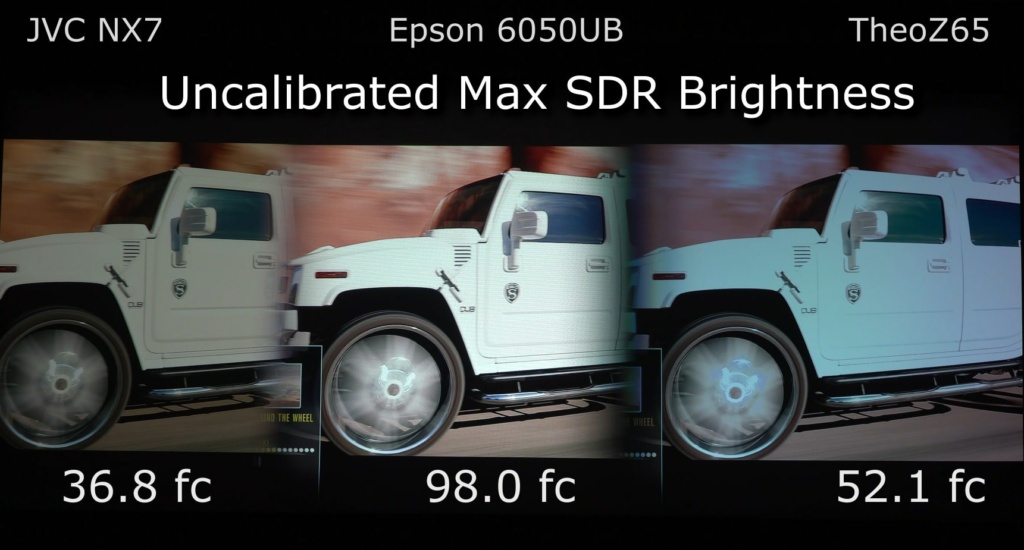
Here, one can see the three very different white balance modes and the affect they have on this white Hummer. This is where the manufacturer probably derived their brightness specification. In this case, only the JVC had a reasonably good white balance when compared to the calibrated scene afterwards. Also note the detail in the side of the vehicle: only the JVC held good detail without blowing out highlights, hence the more conservative, but more realistic, brightness rating that JVC uses.
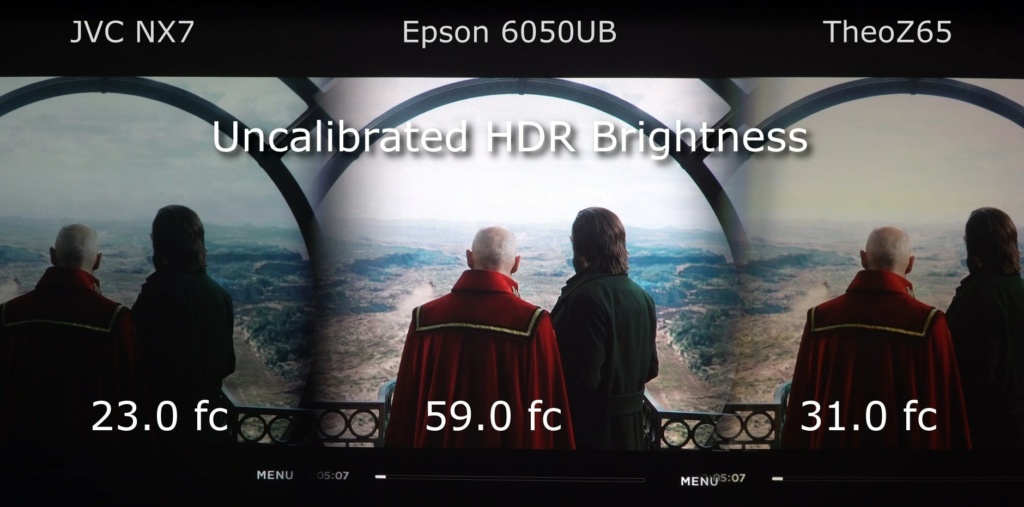
When the projectors detect HDR they are all put in a much better white balance, comparatively speaking. They also choose to gain some brightness by losing some highlight detail, with the exception of the JVC, which chooses to keep detail and sacrifice some brightness.
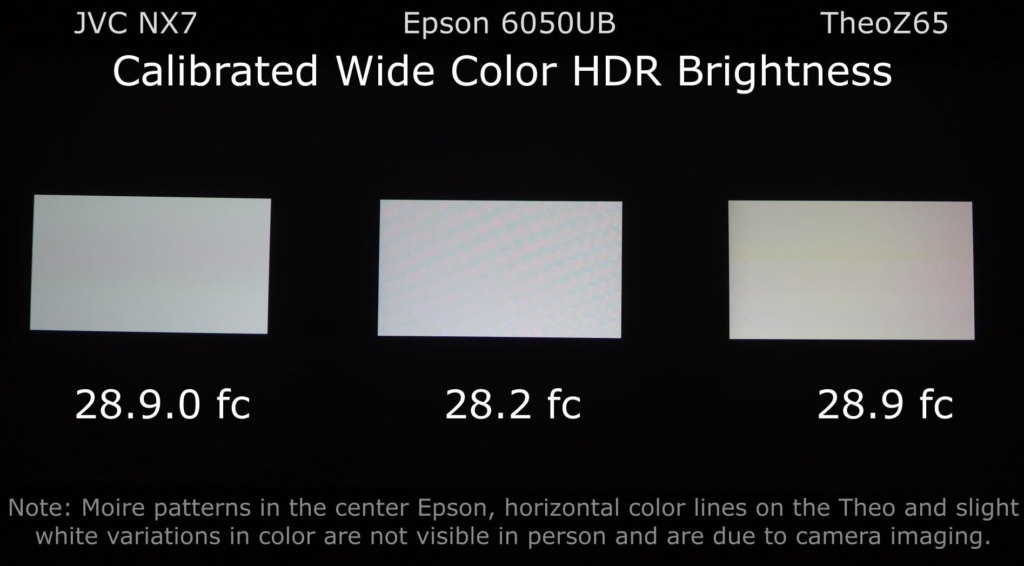
In this picture, once all calibrated to D65 and the white balance clipping levels were all set (even though the camera adds some color due to the DLP color wheel on the Theo-Z65 and adds moire due to the screen door affect), all three three projectors were surprisingly almost identical in terms of light output for HDR 4K sources.
Considering that these three projectors are rated at 2600, 2400, and 1900 lumens, when tested with the color filters engaged for widest color and after calibration they are very close. Of course, if you are willing to give up some of the richer colors and highlight detail, all can go considerably brighter, as shown in the “Uncalibrated HDR” image above. In the case of the Theo-Z65, its filter is always in place so it is just a compromise in clipping and color accuracy, rather than in both wide color and clipping to gain brightness.
Contrast
Contrast in a projected image is very important. Not only does it give depth and realism to an image, but it is an important factor in how our brain interprets an image as detailed and believable. Without good contrast an image is lifeless and flat. Since this was the first time we have had all three projector technologies in 4K HDR, we were very interested in how they would compare. Keep in mind that although we knew the JVC would probably have the best blacks, contrast is different.
Contrast, in this measurement and comparison, is the simultaneous display of darks and highlights at the same time in the same image. There are some who promote dynamic contrast, and although that may give some indication of on-screen contrast, it is not always indicative of what an image on the screen will really look like. For example, the Theo-Z65 can be put in a dynamic black mode that will go completely black on a fade to black (extreme laser dimming) so the dynamic contrast is infinite. However, that is not really a good indicator of what the contrast in a scene will be. To produce both blacks and whites at the same time is one of the most difficult things a projector can do. There are some that would argue that black and white at the same time is not a good indicator because rarely does that occur in most scenes. However, in the case of HDR, that is exactly what we are trying to do – expand the range from dark to light, and all the mid-tones in between. With the introduction of 10-bit video sources (4K HDR UHD Bluray discs) we now have an unbelievable range of tonal values to display reality and tell stories of even wider imagination.
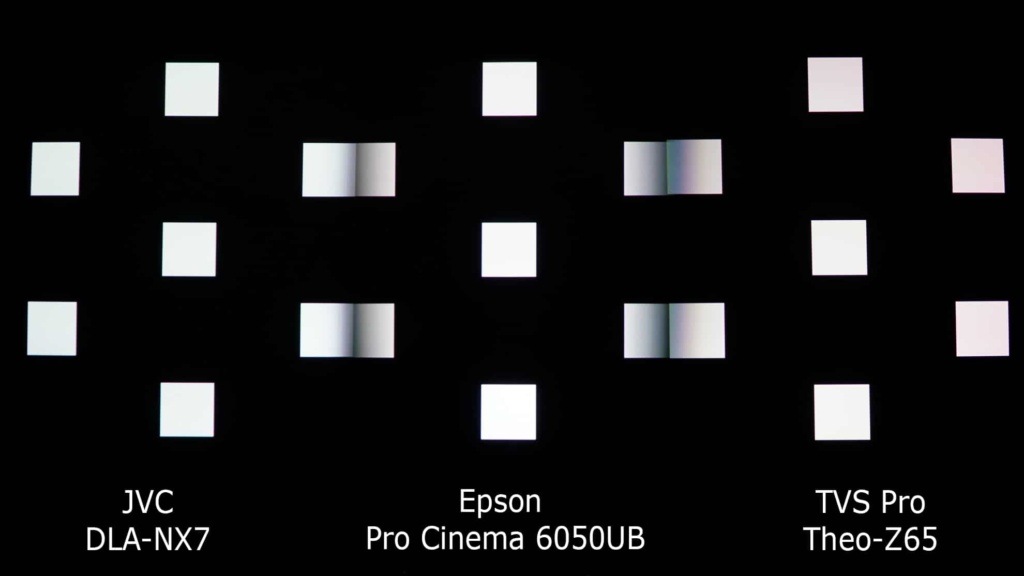
Extreme black and pure whites in this HDR test signal give us an indication of a projector’s ability to display high contrast. In this case, all three projectors were so close that we could not not detect any significant difference with our eyes.
When we measure the ANSI checkerboard pattern it revealed a slight advantage to the two reflective technologies of the LCOS and DLP. In actual scene comparisons it was very close, but the JVC DLA-NX7 and Theo-Z65 had the slight advantage. We really expected the LCD to be much lower in contrast than it was. The Epson has done a remarkable job with these selected chips in the 6050UB.
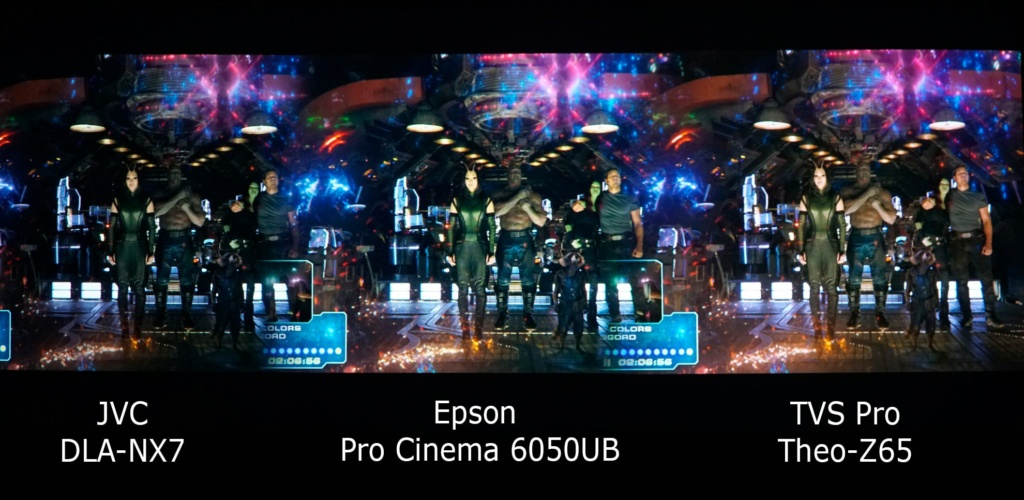
In this HDR scene for Gardians of the Galaxy II, the extremes of both blacks and whites can be seen along with all the mid-tones and gradations in between. All three projectors did a remarkable job with this footage.
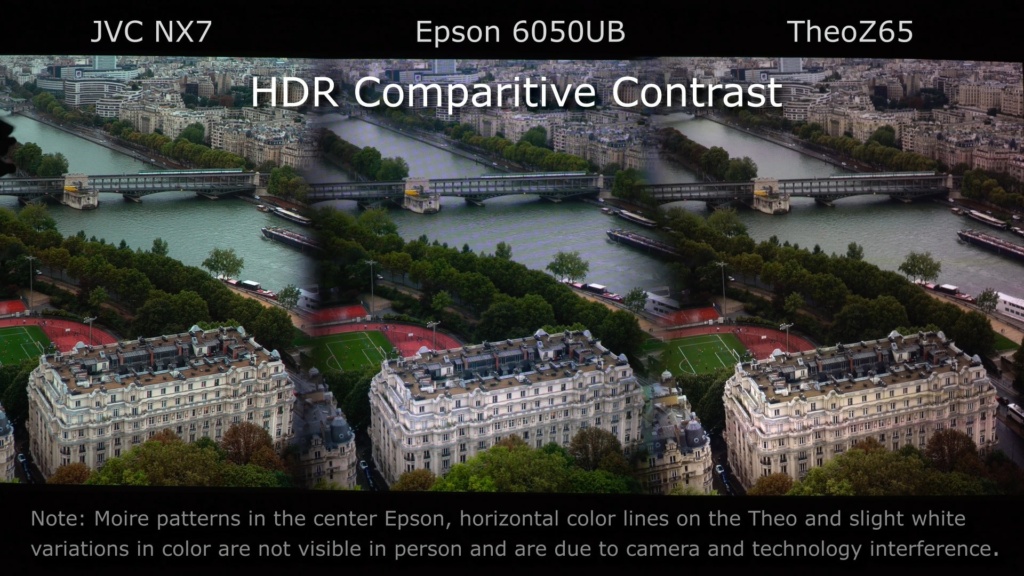
Even in this more typical scene (in terms of contrast), only very slight differences can be seen in the three different technologies. The JVC and Theo have a slight advantage when viewed in-person.
Black Level Performance
As mentioned above, very low light and black levels are very different than contrast. We knew going into this, from past experience with JVC projectors, that the JVC would probably have the best blacks, and it did. No questions, no doubt about it. Shen it comes to black levels, JVC is still king. However, there are also some other considerations one must understand. First, even without the use of an iris, the JVC is still the best in terms of black levels. Second, in terms of near-black detail, one must choose between the best blacks or the best low-level detail, or somewhere in between. Since JVC, with it’s new “Auto HDR” tone mapping, also gives some override capability, it is possible to help bring some of those low-level details. It is a delicate balance between the two.
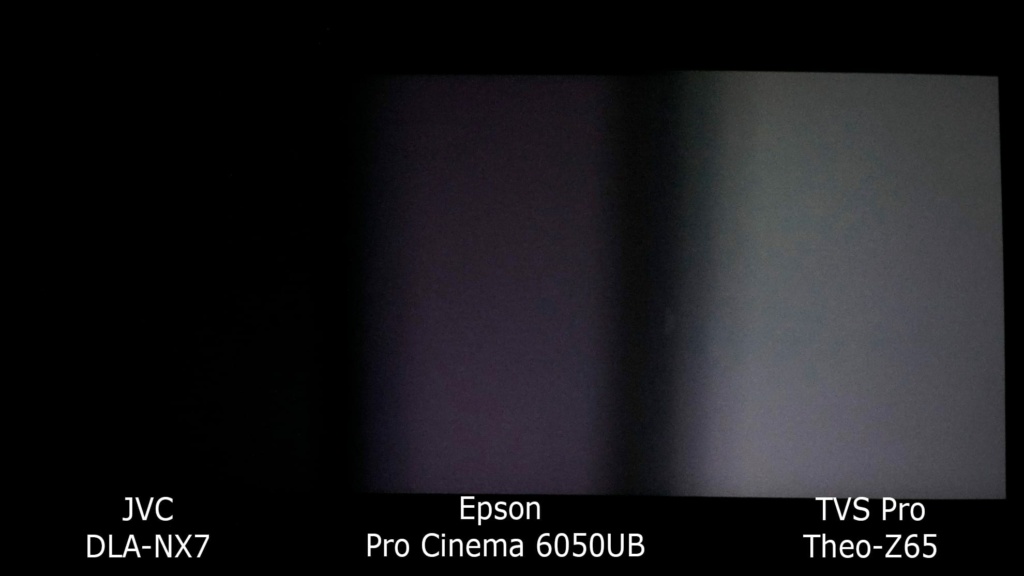
In this way over-exposed image of near black, the JVC can be shown to demonstrate its famous “best blacks” in the projection world. The actual measured difference is less than .01 fc but it is visible to the eye.
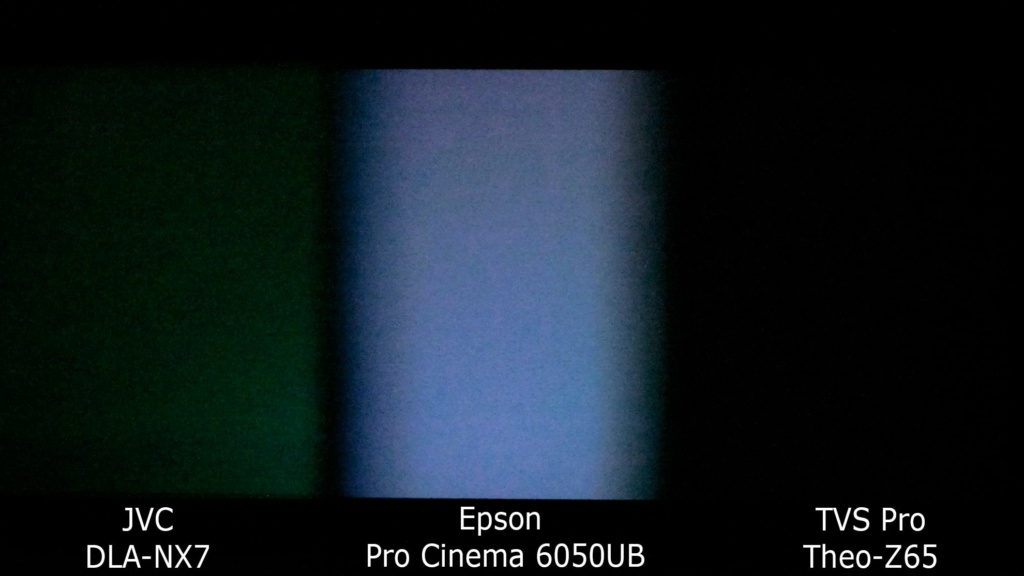
This image, which is even more overexposed, shows pure blacks at 0 IRE. Notice the pure blacks of the Theo-Z65 – which is due to its extreme laser-dimming technology.
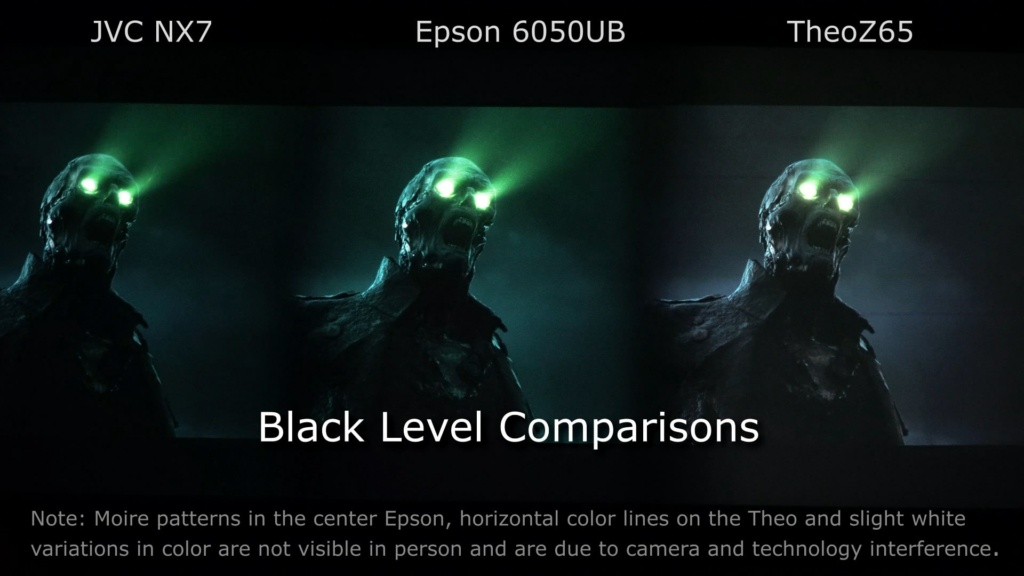
In this scene from Mortal Engines, the challenges of deep blacks and low-level detail can be seen. Although the JVC “Auto HDR” tone mapping made this scene a little too dark for our eyes, we were able to help bring out some of the-low level details as can be seen here.
Detail and 4K Resolution
This was our biggest surprise of the comparisons. We knew the Epson, with it’s 1080 pixel shift technique would probably not equal the native JVC 4K, but we did not expect the Theo-Z65 to equal, or in some scenes even surpass, the detail in the 4K source images of the JVC. We had done prior research on why we had found some previous LCOS projectors had not visibly outperformed the DLP shift technique and this helped to explain what we were seeing. Now to be clear – at HD viewing distances the differences between all 3 of these projectors is not night and day, however at 4K viewing distances it is definitely noticeable. 4K viewing distance is considered 1.5 to 2.5 times the screen height whereas HD viewing is usually considered 3-5 times the viewing height. Since we were seeing the differences at 4K viewing distances we decided to get even closer to see what the differences are.
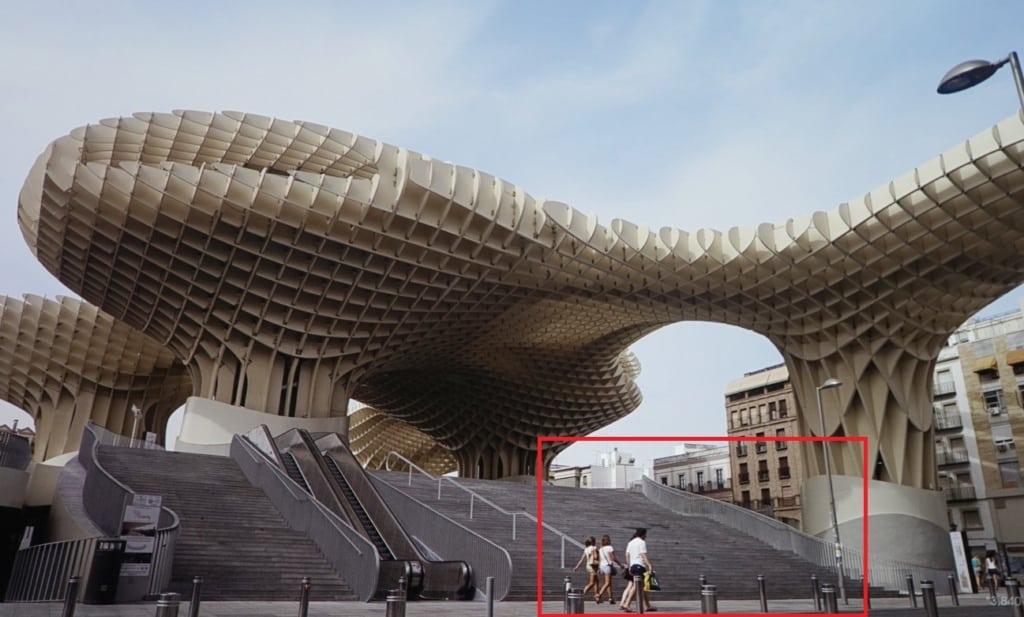
In this 4K image above you can see the red rectangle which we will focus the examination of the detail and resolution in the close ups below.
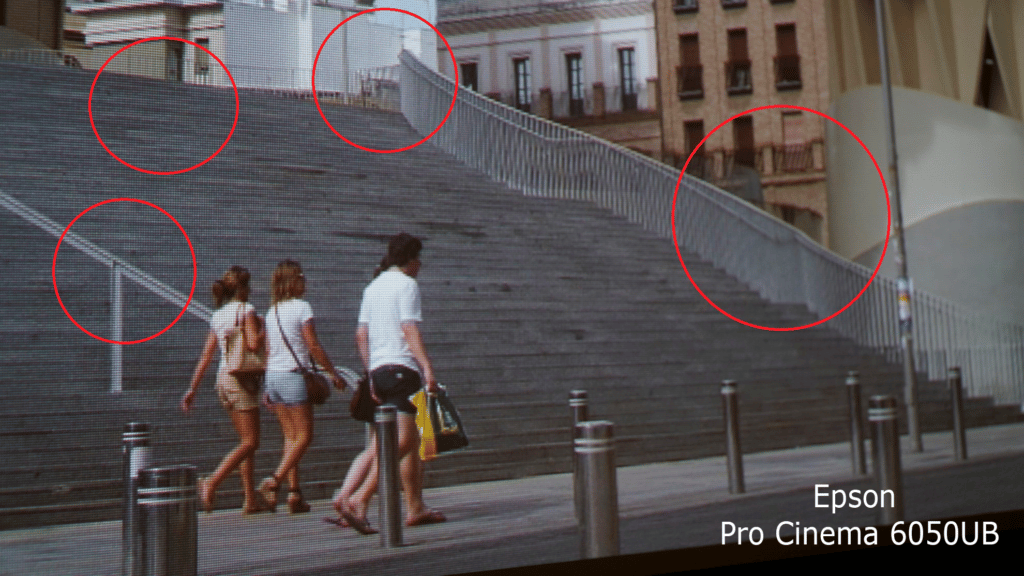
If you look carefully in the circled areas in this closeup on the Epson you will be able to compare to the JVC and Theo closeups below to see the differences.
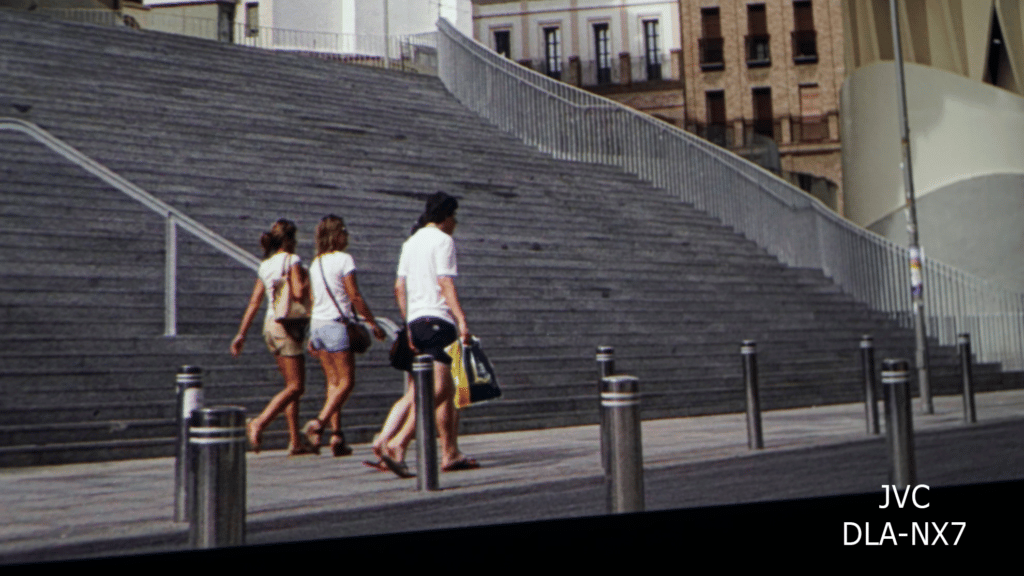
Compared to the Epson image, on the JVC, you should be able to see the difference between 4 million pixels and the over 8 million pixels. Also notice how smooth the JVC LCOS image is compared to the LCD image on the Epson. There is a reason the JVC cost is significantly higher.
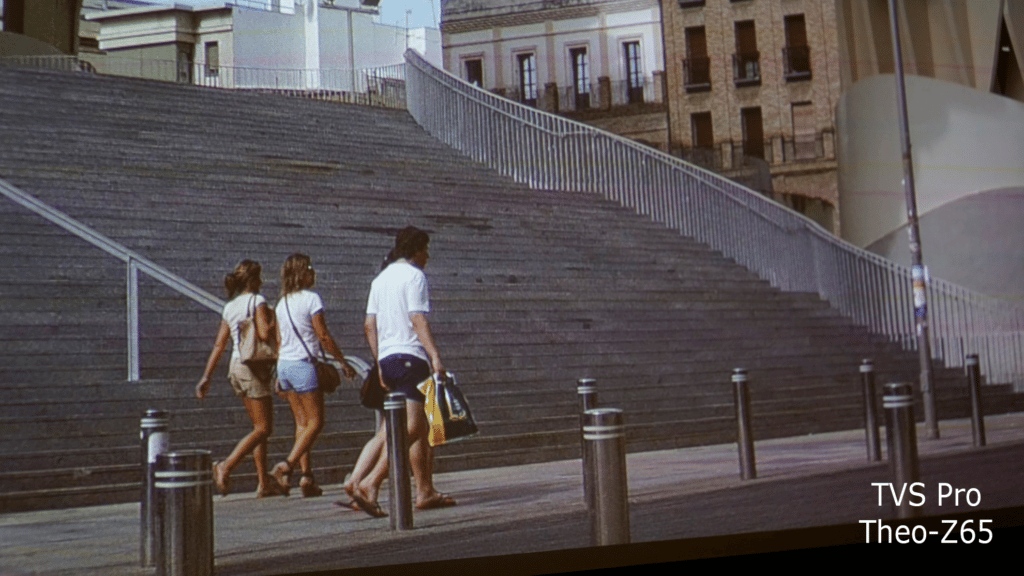
This was our biggest surprise of the comparisons. Look closely, as the Theo image looks every bit as detailed as the JVC, and some would even say more detailed. This was with the “Ultra Detail” off as we felt it added too much peaking and over-emphasis to the image.
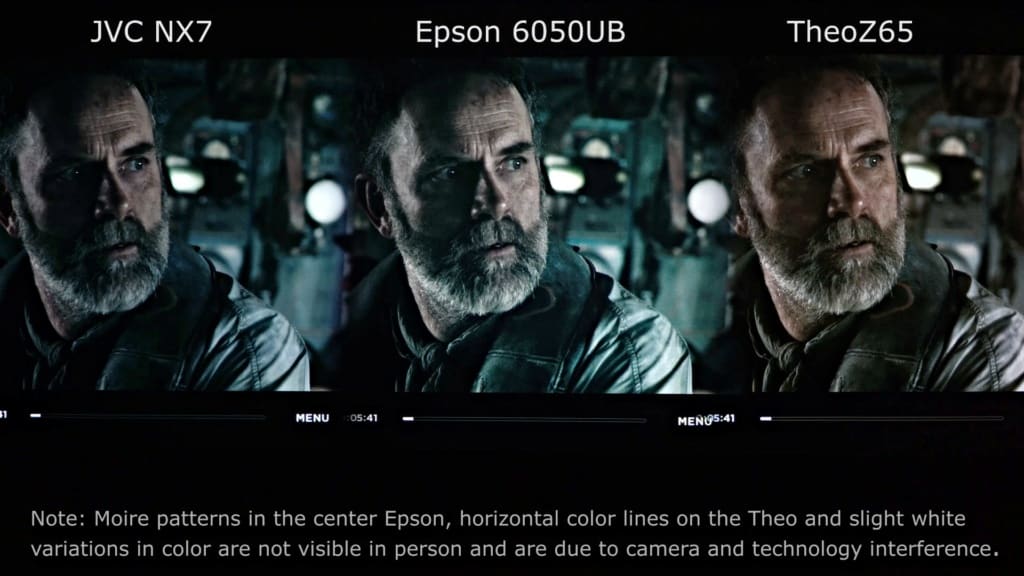
In this scene from Mortal Engines, the detail in the eye area is amazing in 4K HDR. Again, all do an incredible job, but the extra detail in the JVC and Theo are noticeable at 4K viewing distances.
The reason the Theo-Z65, which uses a DLP single chip, can equal or exceed the detail of the native JVC is the 3-chip alignment challenges, and a technical limitation of liquid crystal technology called “Fringe Field Effect.” Basically, the rise time or depth of modulation on a liquid crystal display is somewhat limited by the layer of liquid crystal which cannot turn on and off as cleanly as a digital DLP device.

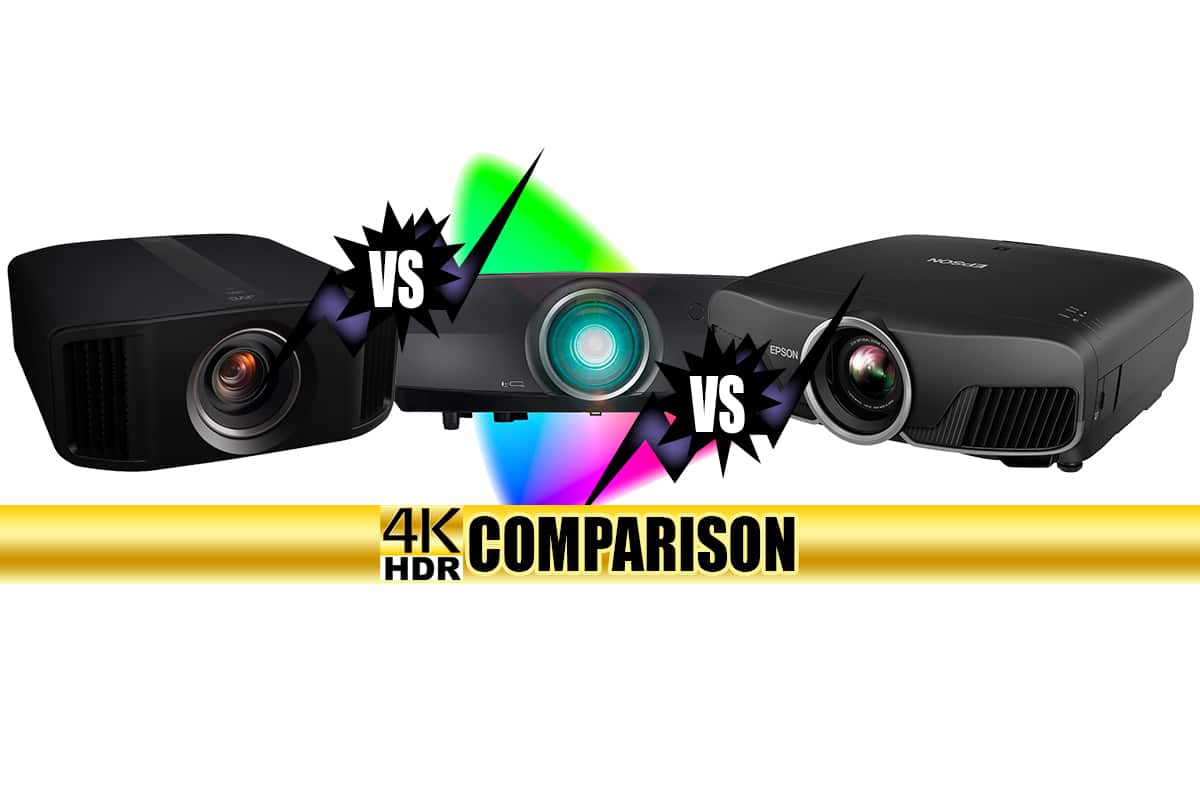
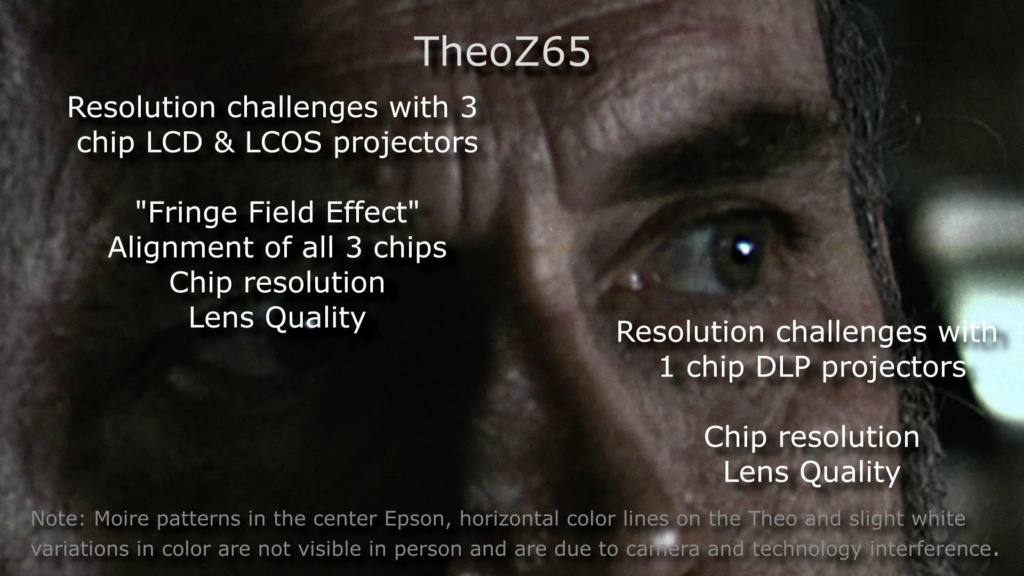
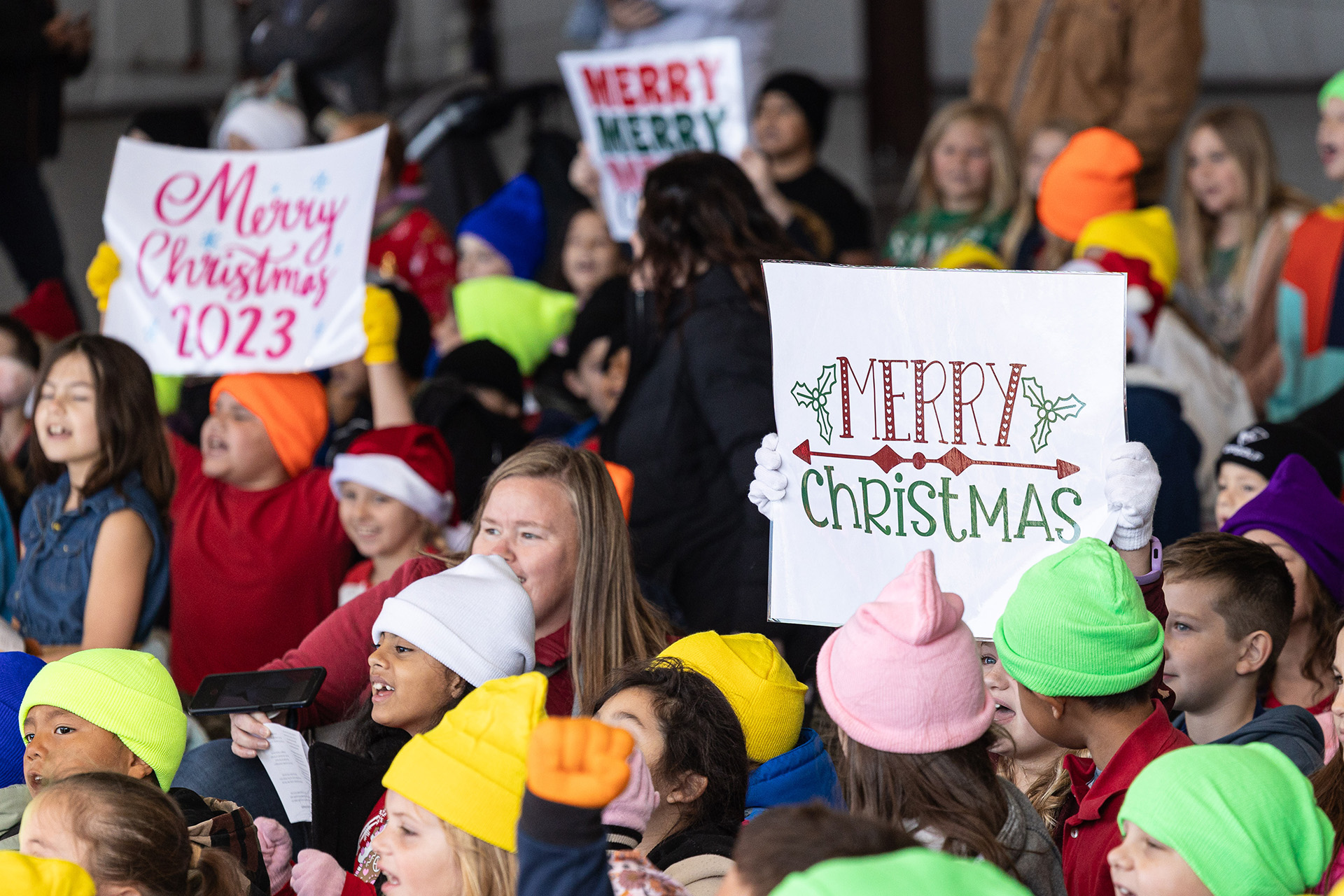
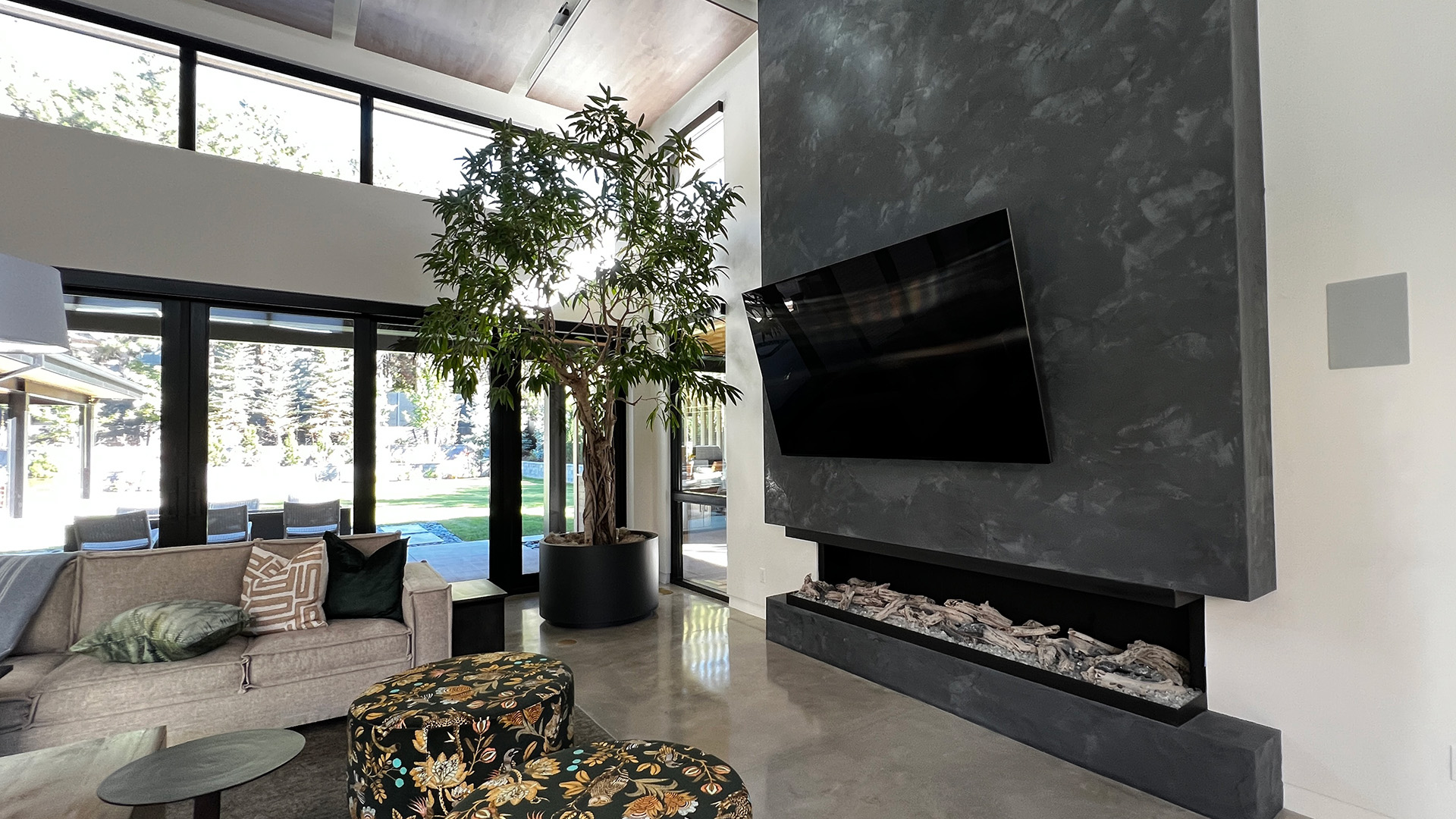
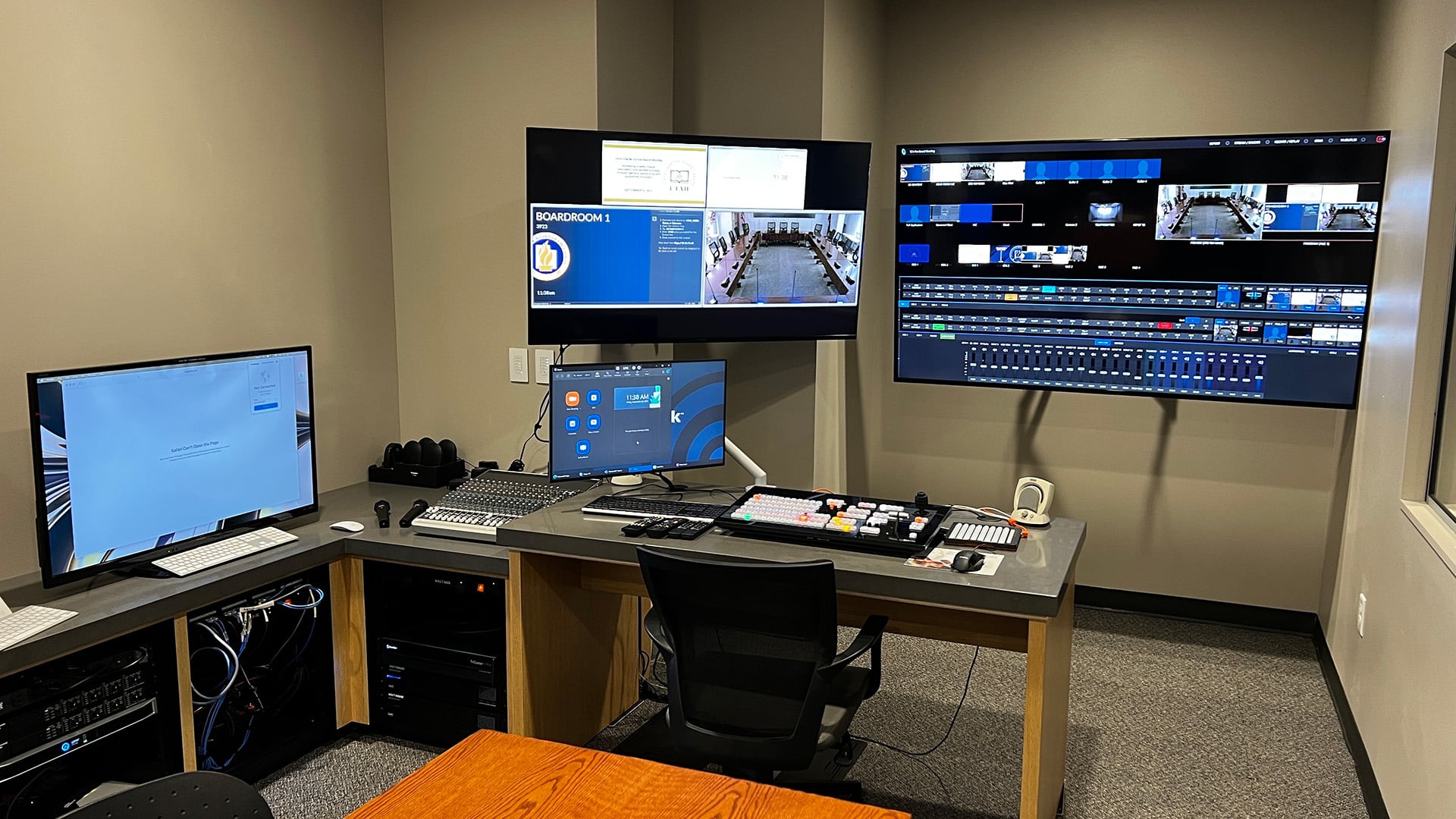
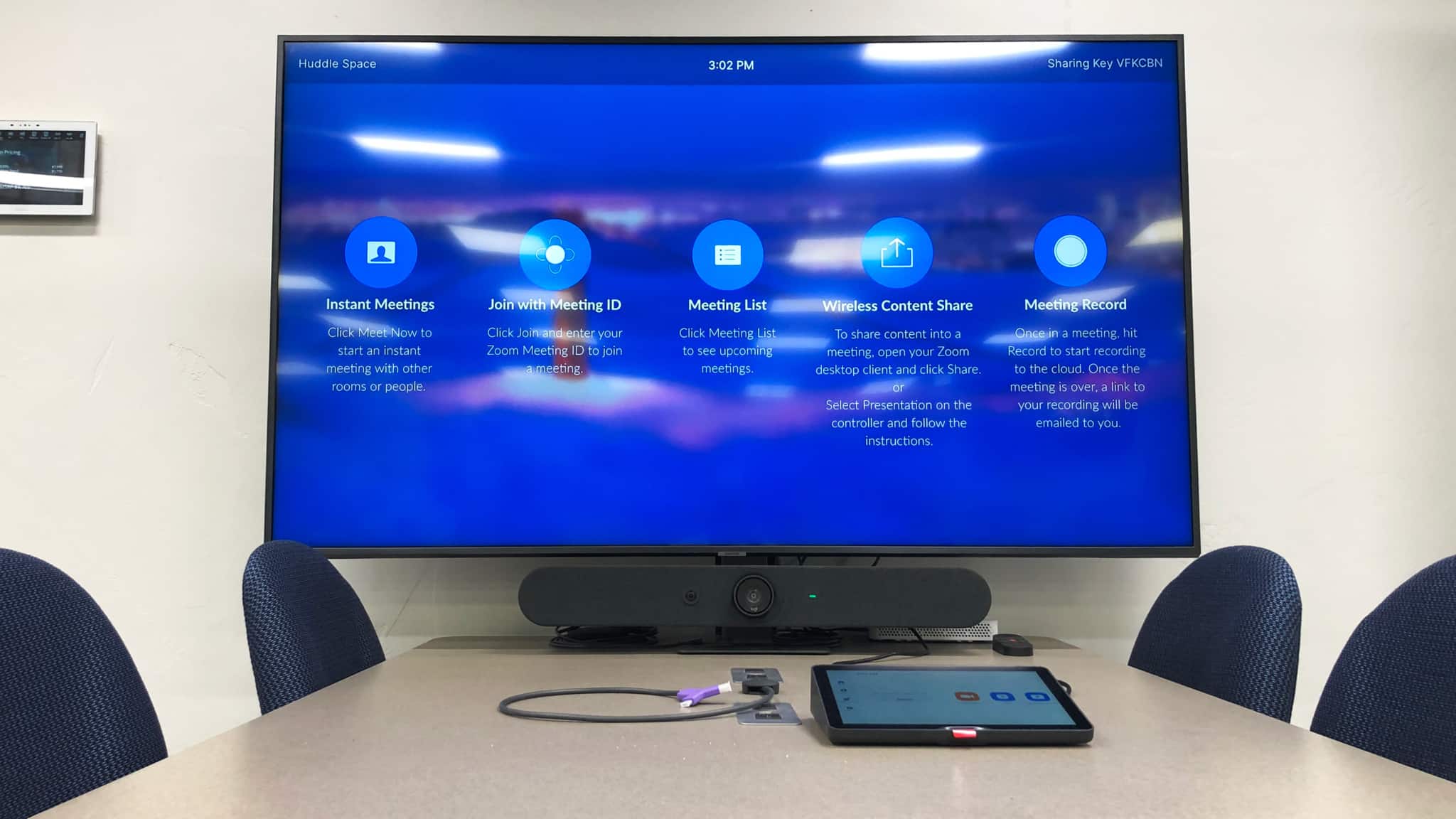
0 Comments